
Amphisbaenia is a group of usually legless squamates, comprising over 200 extant species. Amphisbaenians are characterized by their long bodies, the reduction or loss of the limbs, and rudimentary eyes. As many species have a pink body and scales arranged in rings, they have a superficial resemblance to earthworms. While the genus Bipes retains forelimbs, all other genera are limbless. Although superficially similar to the snakes, legless lizards, and blind lizards, recent phylogenetic studies suggest that they are most closely related to wall lizards of the family Lacertidae. Amphisbaenians are widely distributed, occurring in North America, Europe, Africa, South America, Western Asia and the Caribbean. Most species are less than 6 inches (15 cm) long.
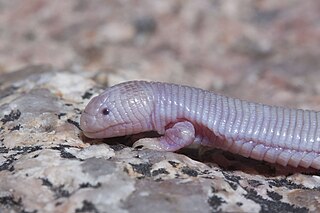
Bipes is a genus of amphisbaenians found only in Mexico, the sole living member of the family Bipedidae. They are carnivorous, burrowing reptiles, but unlike other species of amphisbaenians, they possess two stubby forelimbs placed far forward on the body. They also retain an almost complete pectoral girdle. The shovel-like limbs are used to scrape away soil while burrowing, in a manner similar to a mole. Evidence for their occurrence in the United States is reviewed by Somma (1993).

Trogonophidae is a small family of amphisbaenians, containing five species in four genera.
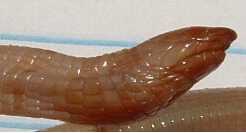
Rhineuridae is a family of amphisbaenians that includes one living genus and species, Rhineura floridana, as well as many extinct species belonging to both Rhineura and several extinct genera. The living R. floridana is found only in Georgia and Florida, but extinct species ranged across North America, some occurring as far west as Oregon. The family has a fossil record stretching back 60 million years to the Paleocene and was most diverse in the continental interior during the Eocene and Oligocene.

The Iberian worm lizard, Mediterranean worm lizard, or European worm lizard is a species of reptile in the family Blanidae of the clade Amphisbaenia. The Iberian worm lizard is locally known as cobra-cega (Portuguese), culebrilla ciega (Spanish), and colobreta cega (Catalan), all meaning "blind snake". Recent studies into the mitochondrial and nuclear genomic data of 47 isolated B. cinereus populations show rather large sequence divergence between two apparent clades, leading some researchers to call for a division of the Iberian worm lizard into two species. While little is known of B. cinereus in comparison with some other reptile species, new insight is growing about this primitive, ancestral reptile.

Blanus, also known as worm lizards, are a genus of amphisbaenians found in the Mediterranean region of Europe and North Africa. Like other amphisbaenians, Blanus species are specialized for a subterranean existence, with long, slender bodies, reduced limbs, and rudimentary eyes. Their skulls are powerfully constructed, allowing them to push through soil to create a burrow. Their jaws are well-developed, with large, recurved teeth and a pair of canine-like teeth in the upper jaw.

Amphisbaena is a genus in the family Amphisbaenidae, commonly known as worm lizards. Over 100 species are placed in this diverse genus.

Darwin's ringed worm lizard is a species of amphisbaenian in the family Amphisbaenidae, endemic to South America.
Vanzolini's worm lizard is a species of amphisbaenian in the family Amphisbaenidae. The species is native to northern South America.
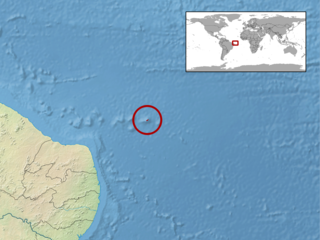
Amphisbaena ridleyi, known by the common names Ridley's worm lizard or the Noronha worm lizard, is a species of amphisbaenian in the family Amphisbaenidae. The species is endemic to the island of Fernando de Noronha off the coast of Brazil. It is one of two indigenous reptiles on the island.

Amphisbaena mertensii, also known as the Mertens' worm lizard or Mertens's worm lizard, is a species of worm lizard in the family Amphisbaenidae. The species is endemic to South America.

Leposternon microcephalum, also known commonly as the smallhead worm lizard, is a species of amphisbaenian in the family Amphisbaenidae in the reptilian order Squamata. The species is endemic to South America.

Dalophia is a genus of amphisbaenians in the family Amphisbaenidae, commonly known as worm lizards. Seven species are placed in this genus.

Leposternon is a genus of amphisbaenians in the family Amphisbaenidae. Species in the genus are commonly known as worm lizards, even though they are not lizards. 11 species are placed in this genus.
Loveridgea is a genus of amphisbaenians in the family Amphisbaenidae. Species in the genus are commonly known as worm lizards, even though they are not lizards. Two species are placed in this genus.
The Cuban many-ringed amphisbaena, also known commonly as the Cuban many-ringed worm lizard, is a species of amphisbaenian in the family Amphisbaenidae. The species is endemic to Cuba.
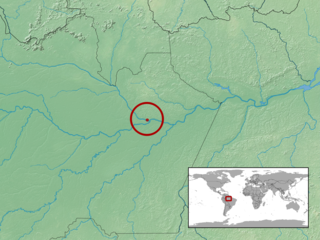
Slevin's worm lizard is a species of amphisbaenian in the family Amphisbaenidae. The species is endemic to northern South America.
Stejneger's worm lizard is a species of amphisbaenian in the family Amphisbaenidae. The species is endemic to Guyana.
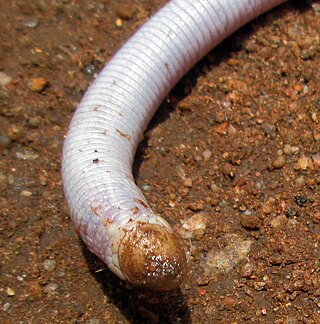
Monopeltis capensis, also known commonly as the Cape spade-snouted worm lizard, the Cape wedge-snouted worm lizard, the Cape worm lizard, and the South African shield-snouted amphisbaenian, is a species of amphisbaenian in the family Amphisbaenidae. The species is native to southern Africa.
Monopeltis sphenorhynchus, also known commonly as Maurice's slender worm lizard, Maurice's spade-snouted worm lizard, and the slender spade-snouted worm lizard, is a species of amphisbaenian in the family Amphisbaenidae. The species is native to southern Africa. There are two recognized subspecies.















